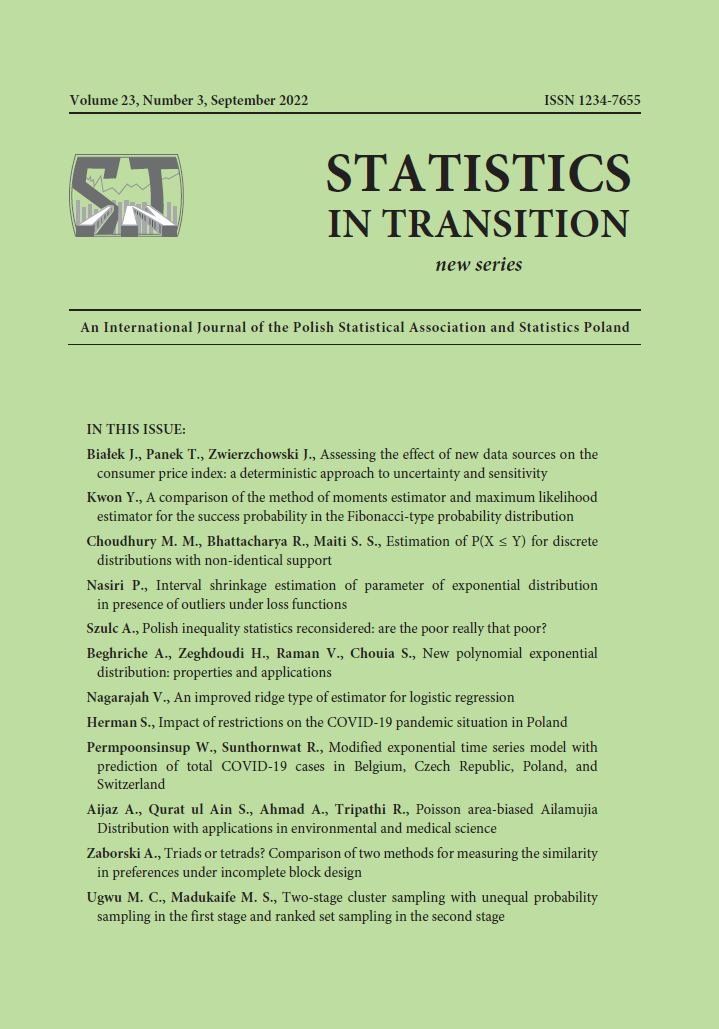ARTICLE
ABSTRACT
The measurement of preferences can be based on historical observations of consumer behaviour or on data describing consumer intentions. In the latter case, the measure-ment of preferences is performed using methods which express consumer attitudes at the time of research. However, most of these methods are very laborious, especially when a large number of objects is tested. In such cases incomplete analyses may prove useful. An incomplete analysis involves the division of objects into subgroups, so that each pair of objects appears at exactly the same frequency and all objects are in each subgroup. The purpose of the work is to compare two incomplete methods for measuring the similarity of preferences, i.e. the triad method and the tetrad method. These methods can be used whenever similarities are measured on an ordinal scale. They have been com-pared in terms of their labour intensity and ability to map the known structure of ob-jects, even when all pairs of objects in subgroups cannot be presented equally frequent-ly.
KEYWORDS
measurement of preferences, triads, tetrads, multidimensional scaling
REFERENCES
Bijmolt, T. H. A., (1996). Multidimensional Scaling in Marketing: Towards Integrating Data Collection and Analysis. Capelle a/d Ussel: Labyrint Publication.
Borg, I., Groenen, P. J. F, (2005). Modern Multidimensional Scaling. Theory and Applications. Second Edition. New York: Springer-Verlag.
Burton, M. L., Nerlove, S. B., (1976). Balanced design for triads tests: two examples from English. Social Science Research, 5, pp. 247–267.
Cox, T. F., Cox, M. A. A., (2001). Multidimensional Scaling. Second Edition London: Chapman and Hall.
Coxon, A. P. M, Davies, P. M. (1982). The user's guide to multidimensional scaling with special reference to the MDS(X) library of computer programs. London, Heinemann Educational.
Humphreys, M. A., (1982). Data collecting effects on nonmetric multidimensional scaling solutions. Educational and Psychological Measurement, 42, pp. 1005–1022.
Morris, M., (2010). Design of Experiments: An Introduction Based on Linear Models, New York: Chapman and Hall/CRC.
Rink, D. R., (1987). An improved preference data collection method: Balanced incomplete block designs. Journal of the Academy of Marketing Science, 15(3), pp. 54–61.
Roskam, E. E. (1970), The methods of triads for multidimensional scaling, Nederlands Tijdschrift Voor de Psychologie, No. 25, pp. 404–417.
Varian, H. R., (2005), Mikroekonomia, PWN, Warszawa.
Zaborski, A., (2001). Skalowanie wielowymiarowe w badaniach marketingowych. Wrocław, Wydawnictwo Akademii Ekonomicznej we Wrocławiu.
Zaborski, A., (2003). Wpływ alternatywnych metod pomiaru preferencji na wyniki skalowania wielowymiarowego. Prace Naukowe AE w Katowicach, Analiza i prognozowanie zjawisk o charakterze niemetrycznym, pp. 59–69.
Zaborski, A., (2014). Analiza preferencji słuchaczy Uniwersytetu Trzeciego Wieku z wykorzystaniem wybranych metod niesymetrycznego skalowania wielowymiarowego. Studia Ekonomiczne. Zeszyty Naukowe Uniwersytetu Ekonomicznego w Katowicach, 195(14), pp. 216–224.
Zaborski, A., (2017). The Influence of Triad Selection on the Preference Scaling Results. Acta Universitatis Lodziensis. Folia Oeconomica, 4(330), pp. 87–97.
